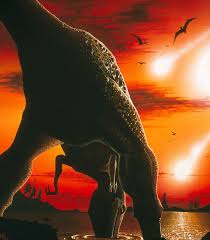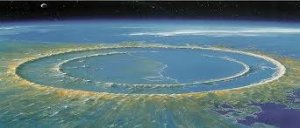

Scientists have recently confirmed that an impact from an asteroid (or comet) caused the Cretaceous-Paleogene extinction event – more affectionately known as the event that took out the dinosaurs. Here, a Manhatten-sized object slammed into the Yucatan Peninsula near Mexico and decimated the global environment…causing one of the greatest extinction events in Earth’s history. New evidence suggests the situation was gloomier than previously thought (assuming that’s even possible).

It seems likely that the impact event caused a global firestorm. As the 6-mile diameter object plowed into Earth, an incomprehensible amount of rock was vaporized and thrown high into the atmosphere. As the material fell back to earth, it would have generated an amazing amount of heat, superheating the atmosphere to a stifling 2,700 degrees Fahrenheit. If this were the case, the upper atmosphere would have glowed red for several hours.
Fortunately for life on Earth, the rest of the atmosphere worked as an insulator, preventing those completely unbearable temperatures from sterilizing the planet. Unfortunately, for a large population of life on Earth (about 80%, in fact), these conditions still ignited pretty much every dead leaf and twig on the planet causing a firestorm that makes the recent fire-disaster in Australia look like a cool walk in the park. If you didn’t have shelter underground or in the water, chances are you didn’t survive.
Temperatures on the surface were still hundreds of degrees for several hours after the impact and remained quite warm while the fires burned.

One of the main pieces of evidence of this firestorm is seen in a layer of ash found at the geological boundary for the Cretaceous-Paleogene period, also called K-Pg. This marker is seen all over the planet in a consistent manner suggesting widespread fires were taking place at that time. In case you think the ash-layer was caused by the reentering debris from the asteroid, those calculations have already been run. Our current estimates shows the ash-layer is too thick to be solely from the impact event. Whether or not the extra ash came from a global firestorm that contributed to the death of 80% of all life on Earth has yet to be determined; but the initial data looks promising.